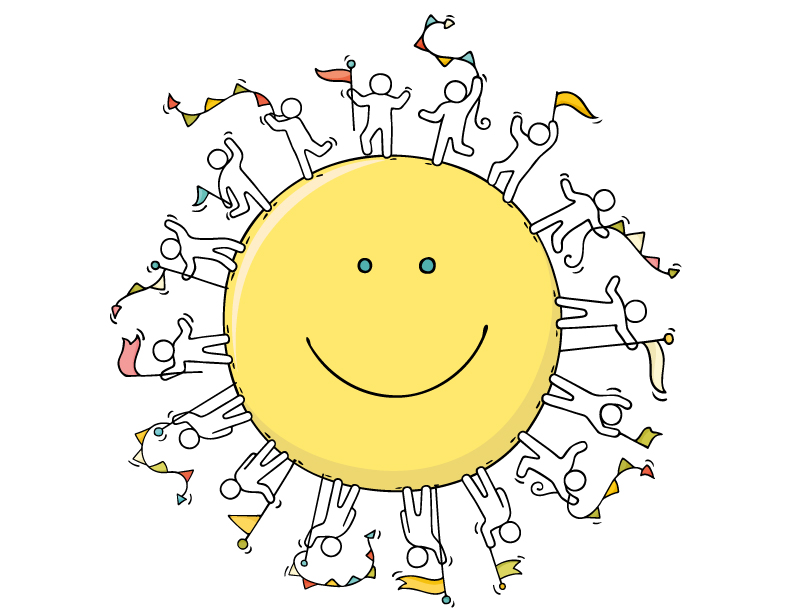It’s common for leaders and change-management experts to talk about organizations as if they were machines or computers. Machines have parts, which either work or break down, in which case they need to be repaired or replaced. Sometimes, they need tune-ups, new engines, or software updates. It’s a convenient metaphor, pleasingly concrete. There’s just one problem: actual organizations don’t work like machines. Businesses are not body shops. And people don’t respond well to being treated like parts that either function well or are deficient. If you think simply replacing all your dysfunctional parts or installing the latest trendy management theory like a software update is the answer to building a high performing organization, you will be in for a long, difficult journey.
One of the central shortcomings of the mechanistic approach is that it sees the whole as being simply the sum of the parts, and the parts as being essentially predictable and self-contained. As anyone who’s tried to lead a team of people knows, this could not be farther from the truth. An organization is much more than the sum of the people involved — that’s what makes it powerful, but also challenging to manage. And those people are anything but predictable, while being profoundly interconnected. In this sense, as in many others, the machine metaphor is a poor fit and gives rise to leadership approaches that are limited at best.
So, if organizations are not machines, how might we understand them better? I’ve come to the conclusion that that best way to see — and lead — an organization is as a system. More specifically, as a complex, adaptive social system.
That may not be as conveniently concrete as a machine or a computer, but it’s a more accurate and therefore more powerful way to understand the human dynamics involved. I’ve found that this shift of metaphor works with leaders and teams to open the door for them to envision and lead transformations that otherwise might have seemed impossible. Leaders and team members must become systems thinkers — able to visualize and model the ways in which the elements of the system interact and transform.
For example, think about an ecosystem, an ant colony, the flow of urban traffic, an economy, a language, the human immune system, the internet, a cell, a nation. In each of these diverse examples, the system has its own properties that cannot always be predicted by understanding the parts. You could study an individual bee for years and never fully understand the behavior of a hive.
Complex adaptive systems occur in the natural world and in the human world, but when it comes to human systems, we add the term “social.” In such systems, the complexity is increased by the fact that the system is made up of individual people, each possessing a degree of agency— the ability to choose, adapt, surprise, change direction, as well as create and collaborate in new and interesting ways. Each agent in this system has a unique mental and emotional universe, an interior, subjective world that influences their choices in ways that are hard, if not impossible, to predict or control. At times, that can make everything immensely more difficult and confusing, and yet, the good news is that it makes so much more possible.
One of the most remarkable things about human beings is our ability to intentionally organize around a shared goal or purpose and in so doing, to achieve things we could never do alone. You might be a brilliant medical scientist who invents a powerful new drug to cure cancer, but if it’s just you in your lab, you won’t save many lives. You need others to help you manufacture the drug, test it and ensure it’s safe, sell it, distribute it, and so on.
There are many organizational approaches that assume people are not that different from ants — that we are merely Pavlovian creatures of instinct and incentive. Of course, humans certainly do respond to incentives, and are partially driven by instinct, but that is not all that is going on. And if we want to reach the full potential of organizational life, it’s important to recognize that truth. A business is a complex adaptive social system because it is more than the sum of its parts, but also because its parts are people — unruly, innovative, unpredictable, irrational, responsible, empathetic, intentional, creative, surprising people.
In fact, one of the things I love about business is that it represents the cutting edge of our capacity as human beings to join together, engage our best efforts, and improve our lives both individually and collectively. Business, as a shared endeavor, is a kind of evolutionary forefront in our cultural capacity to organize.

Today’s organizational entities go beyond business of course — there are many other examples of large and impressive organizations today, like non-profits or educational institutions. But even so, business has truly been at the leading edge, and sometimes bleeding edge, of learning how to make human organization adaptive and dynamic even as it grows larger and more complex. Indeed, understanding how to make large organizations work in a dynamic way is still a relatively new science, and there is so much to learn. But make no mistake, our ability to solve tomorrow’s great challenges will, in no small way, depend upon our ability to effectively organize and accomplish things together at scale, in complex adaptive social systems.
I’ve seen many business leaders reach the point when they begin to realize that leading an organizational social system is much more complex and difficult than they had bargained for. At that point, they sometimes start wishing that they could simply replace their team. Hire a new group of super-talented, easy-to-manage, uncomplicated team members who already work perfectly well together, and all the problems will simply vanish! But of course, that’s not possible. Sometimes bringing in new blood is helpful, but the idea that the problems are rooted in having the wrong people as opposed to inadequate leadership and a dysfunctional organizational regime is the unfortunate root of many problems in today’s workplace. I promise you, there is no perfect team out there on LinkedIn waiting to answer your email. Sooner or later, every successful leader has to grapple with a terrible but liberating truth — they can’t solve their problems through hiring and firing. They have to find ways to develop their own leadership intelligence, which will then allow them to develop their team and ultimately influence their company. Thus begins the journey, and the real work of organizational transformation.
Adapted from NAVIGATE THE SWIRL: 7 Crucial Conversations for Business Transformation by Richard S. Hawkes (Wiley; 2022).
About the Author

Richard S. Hawkes is the author of NAVIGATE THE SWIRL: 7 Crucial Conversations for Business Transformation, published by Wiley. He is the CEO and Founder of Growth River, an international consultancy with offices in the United States and Germany that guides leaders and teams to create higher performance in businesses and organizations. Clients include Edward Jones, GENEWIZ, Hitachi, Pfizer, Johnson & Johnson, and Mars. Hawkes received a B.A. in Computer Science and German Literature from Hamilton College and an M.B.A. in Marketing and Organizational Development from the University of Wisconsin-Madison. For more information, visit: www.growthriver.com




































